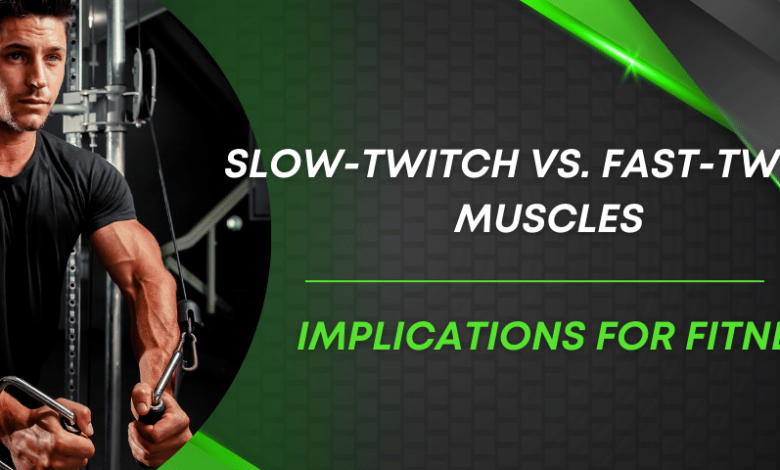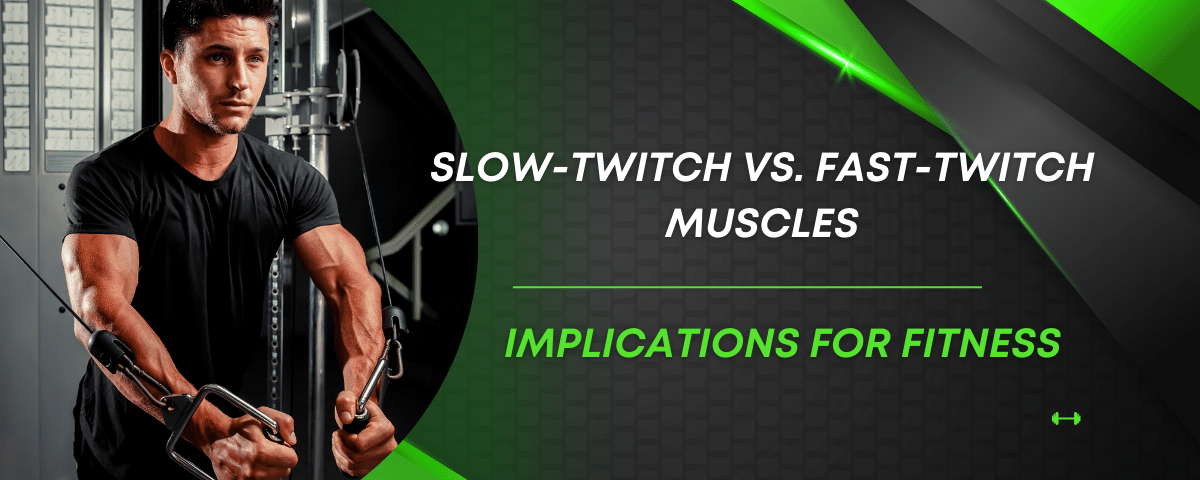Slow-Twitch vs. Fast-Twitch Muscles: Implications For Fitness
Unlocking Your Athletic Potential: Slow-Twitch vs. Fast-Twitch Muscles in Fitness

Slow-Twitch vs. Fast-Twitch Muscles: Decoding the Impact on Fitness
When it comes to fitness and physical performance, our muscles are the engines that drive us forward. However, not all muscles are created equal. Understanding the difference between Slow-twitch vs. fast-twitch muscles is essential for tailoring your fitness routine, achieving your goals, and optimizing athletic performance. In this blog post, we’ll delve into the world of muscle fibers, exploring the implications of slow-twitch and fast-twitch muscles for your fitness journey.

The Anatomy of Muscle Fibers
Before we explore the implications, let’s start with the basics. Skeletal muscles are composed of individual muscle fibers, which can be categorized into two primary types: slow-twitch (Type I) and fast-twitch (Type II) muscle fibers.
-
Slow-Twitch Muscle Fibers (Type I)
- Endurance Specialists: Slow-twitch muscle fibers are built for endurance. They are designed to sustain contractions for extended periods, making them ideal for activities like long-distance running, cycling, and swimming.
- Aerobic Powerhouses: These fibers rely primarily on aerobic metabolism, utilizing oxygen to generate energy. As a result, they are highly resistant to fatigue and can produce sustained, low-intensity contractions.
-
Fast-Twitch Muscle Fibers (Type II)
- Explosive Power: Fast-twitch muscle fibers are built for speed and power. They generate intense, short bursts of force, making them crucial for activities like sprinting, weightlifting, and jumping.
- Anaerobic Energy: These fibers primarily rely on anaerobic metabolism, which doesn’t require oxygen. While they can generate tremendous force, they fatigue more quickly than slow-twitch fibers.
Implications for Fitness
Understanding the composition of your muscle fibers can have significant implications for your fitness routine and athletic goals:
-
Endurance Training:
- Slow-Twitch Emphasis: If you have a higher proportion of slow-twitch fibers, you may excel in endurance activities. Focus on aerobic training, such as long-distance running or cycling, to enhance your endurance further.
-
Strength and Power Training:
- Fast-Twitch Emphasis: Individuals with a higher percentage of fast-twitch fibers tend to excel in strength and power-based sports. Engage in resistance training and explosive exercises like sprinting or plyometrics to optimize your potential.
-
Hybrid Athletes:
- Balanced Approach: Many individuals possess a mix of slow-twitch and fast-twitch fibers. Tailor your fitness routine to strike a balance between endurance and strength training for well-rounded athleticism.
-
Adaptation and Training:
- Muscle Fiber Transformation: It’s possible to influence the composition of your muscle fibers through training. While genetics play a role, consistent, targeted exercise can lead to some degree of fiber adaptation.
Conclusion
The interplay between Slow-twitch vs. fast-twitch muscles is a fascinating aspect of human physiology. By understanding your muscle fiber composition and tailoring your fitness routine accordingly, you can maximize your athletic potential and achieve your fitness goals more effectively. Whether you’re aiming for endurance, explosive power, or a balanced approach, embracing your unique muscle composition is the first step to reaching new heights in fitness and performance.




